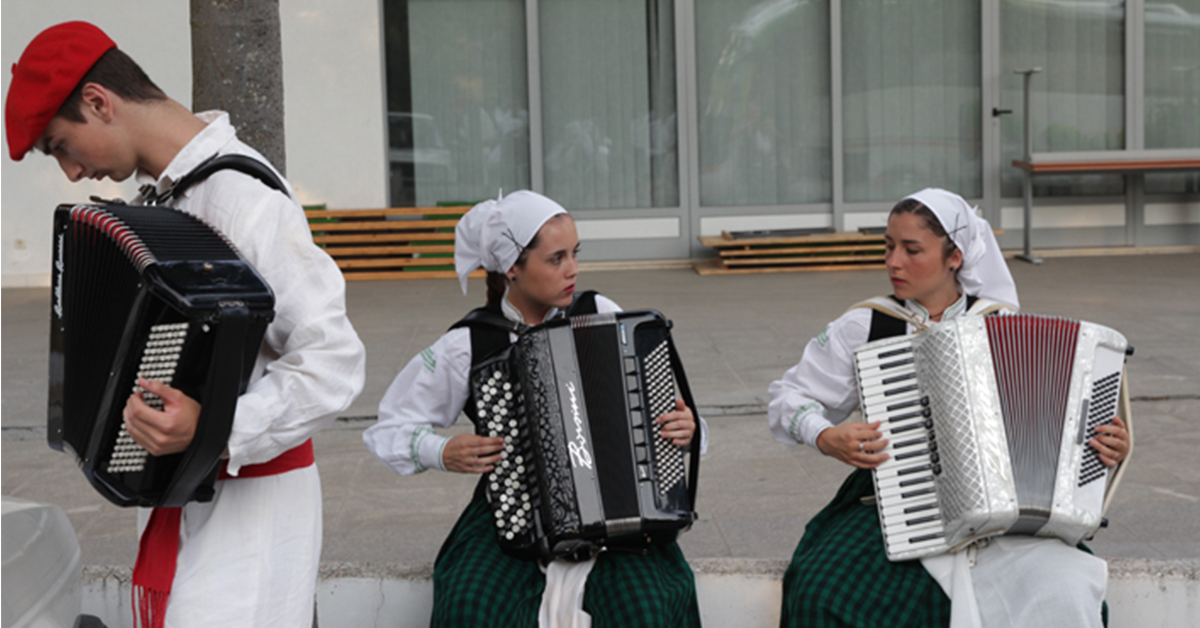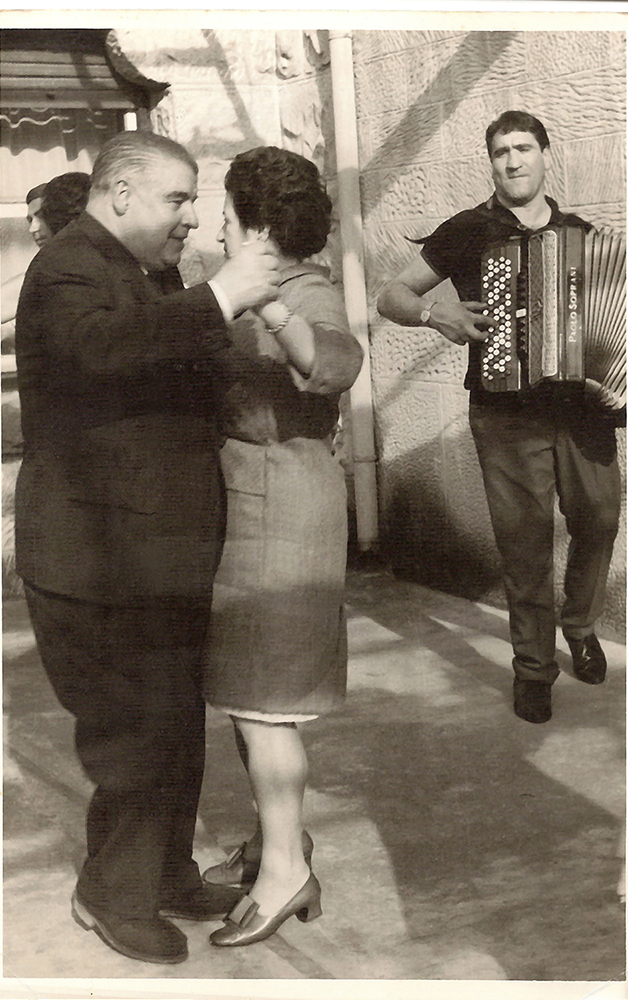Basque ethnography at a glance
The accordion is a musical instrument consisting of two wooden boxes. The musician uses the one on the right to play the main melody and the one on the left for the bass and the chords of the accompaniment. The bellows is between the two boxes. Accordionists use their arms to open and close the bellows to allow air to flow and vibrate the reeds in each of the wooden boxes to produce sound. There are two types of accordions, with buttons or keys on the right.
The accordion was brought to the Basque Country, as to many other places of Europe and the Americas, after the success of its invention in Vienna in 1829. The first accordion was brought here by the workers from the French and Italian Alps who came to lay the first railway tracks at the end of the 19th century.
A new type of dance – “a lo agarrado” (embracing in order to dance) – then began to be introduced in Basque festive pilgrimages. This type of dance, in contrast to the “a lo suelto” (dancing without embracing), involved dancing as couples, and as the very name indicates, in constant contact with the body of the other person. Thus, dancing “a lo agarrado” created a more intimate relationship and often marked the start of a romantic relationship. Those dances were the jota folk dance, polkas, pasodobles and waltzes that the accordionists performed at the popular festivities and celebrations in the different towns. The young, and not-so-young, were thus able to enjoy the pilgrimages and merriment to the sound of live music and dancing “a lo agarrado” with their partners.
Dancing in an embrace, popularly known as baltseoa in Basque (and which came from “waltz”), was denounced as being immoral by most priests and religious figures in the early decades of the last century. Therefore, the ecclesiastical authorities tried to stop those types of festivities from being held. They also condemned the accordion in their diatribes as they believed it to corrupt people.
Thus, the parish priests of many towns believed dancing in an embrace to be a sin and often preached against doing so. According to Etniker’s ethnography survey, one person interviewed in Nabarniz recalled how two young girls dared to dance a pasodoble to the sound of the accordion (farrie) during the St. John festivities in the ‘20s. They were members of the Marianist Sisters and when they went to confession, the local priest refused them absolution.
The accordion has been called by many names in Basque: akordeoi, soinu, farra, filarmonika, and also infernuko hauspo. The latter, translated as “hell’s bellows”, was mainly used by those priests who wanted to stress the immoral connotation – in their opinion – of the use of that musical instrument. And the bellows, a fundamental and distinctive part of the accordion, was also the main tool to stoke the flames of the forge and, by similarity, those of hell.
Even though the reason is not clear, the accordion has fallen in popularity dung recent years in Basque folk music and has been replaced by the trikitrixa (small Basque accordion). The accordion’s tone and musicality are unmistakeable and street accordionists from Eastern Europe, who are talented musical performers, now entertain us with the tunes they play in our streets and squares.
Zuriñe Goitia – Anthropologist



